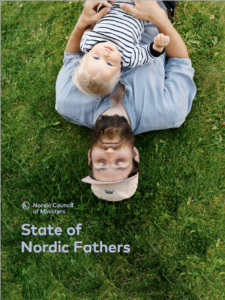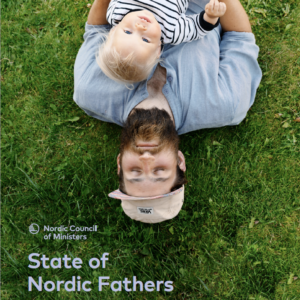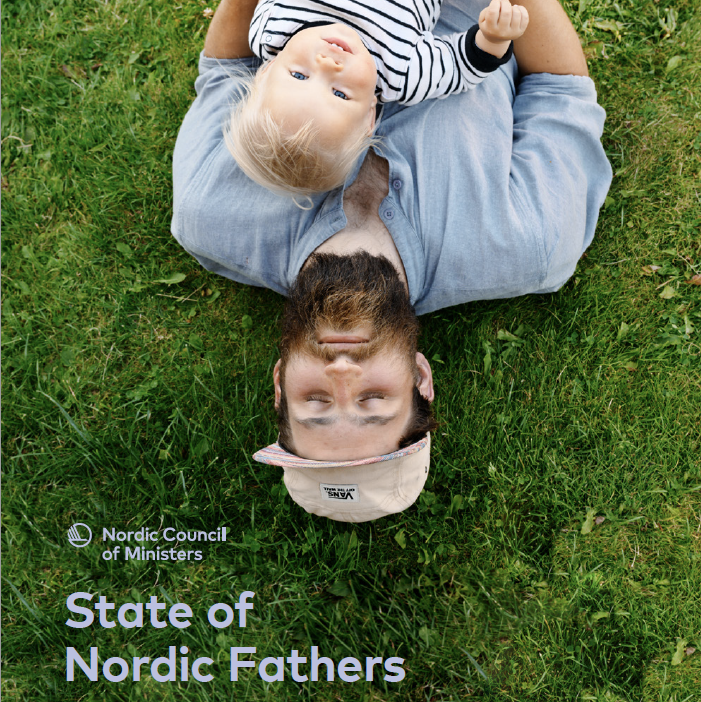Equimundo, Nordic Council of Ministers, and MÄN launch new State of Nordic Fathers report today in UN City, Copenhagen, Denmark.
 Ideas about fatherhood have changed considerably in the Nordic countries over the past decades. The sight of a father pushing his baby in a stroller – or pram – is no longer rare, and parental leave is no longer for mothers only.
Ideas about fatherhood have changed considerably in the Nordic countries over the past decades. The sight of a father pushing his baby in a stroller – or pram – is no longer rare, and parental leave is no longer for mothers only.
Yet parental leave is still not shared equally, despite parents having the right to do so. Over 90 percent of both fathers and mothers say a father should be heavily involved in childcare, however, Nordic fathers only use 10-30 percent of the total leave. State of Nordic Fathers examines why; and identifies possible avenues to increase fathers’ share of childcare and leave.
The State of Nordic Fathers report was carried out alongside the State of the World’s Fathers 2019 report, coordinated by Equimundo on behalf of MenCare: A Global Fatherhood Campaign. The survey gathered insights from 7,515 men and women, mostly parents, in Denmark, Finland, Iceland, Norway and Sweden; it asked questions on the topic of childcare work, parental leave, masculine norms, and workplace and family relationships.
Key research findings include:
- Fathers and mothers agree that parental leave should be shared equally. On average, almost three quarters of both fathers (72 percent) and mothers (73 percent) agree that parental leave should be shared equally between mothers and fathers, and 85 percent of both fathers and mothers agree that fathers should make it a top priority to take all available leave they are eligible for so they can bond with their new-born child.
- Fathers believe they are as competent at taking care of their children as mothers are, and they are almost as satisfied with the level of involvement they have with their children as mothers. According to the survey, 96 percent of both fathers and mothers consider themselves competent or very competent at taking care of their children. When asked if they are satisfied with the involvement they have with their children, fathers were almost as likely to say they were either satisfied or very satisfied (77 percent) as mothers (80 percent).
- Fathers believe childcare responsibilities are shared equally between partners, but mothers don’t. Fathers and mothers have different views on how childcare work is divided in their households. Almost two-thirds (65 percent) of the fathers in this report believe they share childcare responsibilities equally with their partner. In contrast, fewer than half of the mothers (45 percent) say that childcare responsibilities are equally divided between them and their partners, with more than half (53 percent) claiming they do most of the work.
- Fathers who took longer paternity leave say they are less likely to rely on a female partner to do most of the childcare work than those who took a short leave or no leave at all. Almost a quarter of fathers who either took no leave (24 percent) or took leave for a month or less (23 percent) said their female partner did most of the childcare work at home, compared to only 15 percent of fathers who had been on leave for three months. Fathers who took longer leave were also more likely to say they shared childcare responsibilities equally.
- Fathers who took longer paternity leave are less likely to adhere to traditional norms of masculinity. Previous research has suggested that traditional and rigid ideas of what it is to be a man may be an obstacle for men to bond with their children. In line with those findings, this survey indicates that fathers who took short or no leave were more likely to affirm traditional attitudes about manhood.
This report affirms that fathers, just as much as mothers, want to be heavily involved in childcare from the time their children are born. However, we haven’t yet reached equality: women are still assuming the larger share of the responsibility at home and spending more time with children than men are. They are also more likely to change their work situation, either by working part-time or flexible hours. Read the full report to learn more about how we can accelerate progress toward equality.

